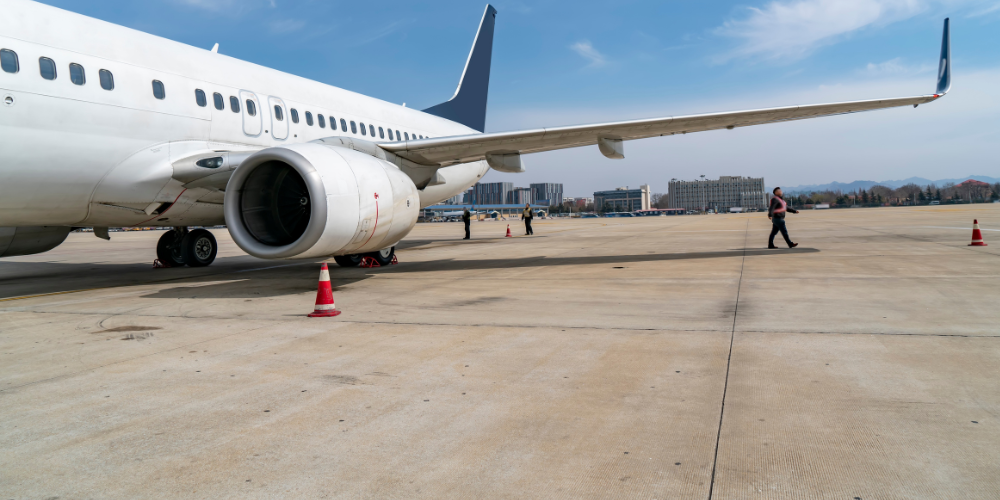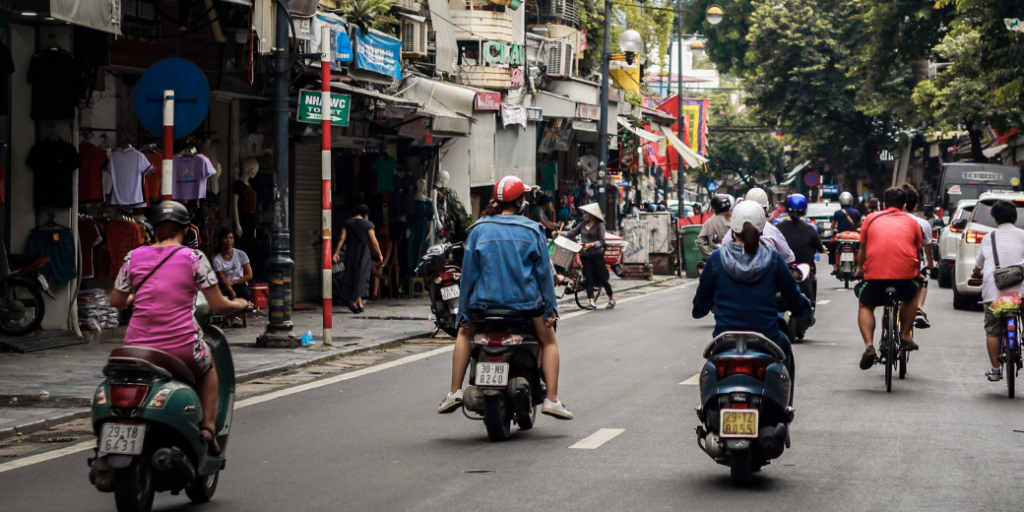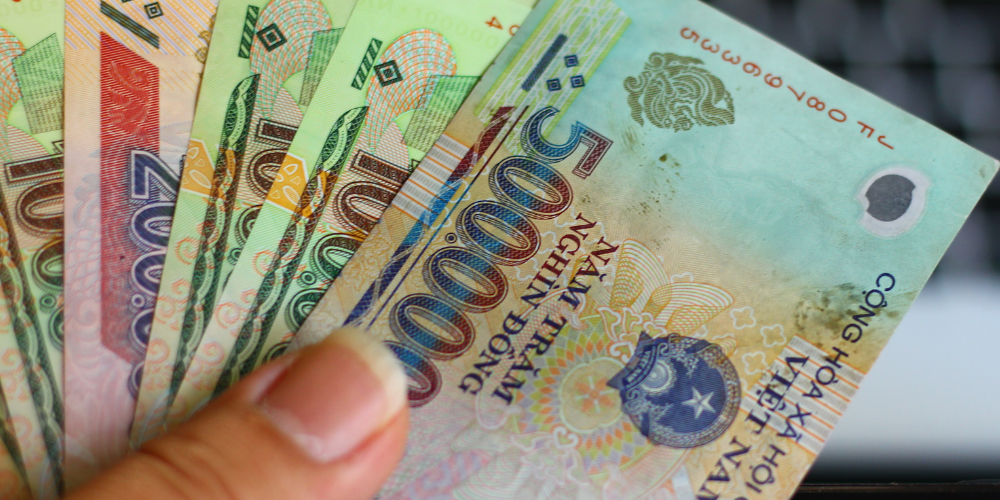Industry Reports
Air Transportation Industry in ASEAN

Summary
Our latest report goes into the details of these changes, offering insights into the global dynamics, regional nuances, and top-performing airlines within the air transportation industry. With a special focus on the ASEAN regions. (Updated: 17 April 2024)
Air transport involves carrying passengers and freight using their fleet of planes to both national and international locations. Airlines acquire their planes from manufacturers or leasing companies and use airports for moving people and goods. Traditionally, passenger services have generated most of the industry’s income. However, the situation shifted during and shortly after the pandemic in 2020 and 2021, with cargo revenues increasing and passenger earnings declining.
Global Market Overview
Industry is Categorised into Full-Service and Low-Cost Carriers; Industry Expects to Fully Recover from the COVID-19 Impacts by 2024
The airline sector consists of Full-Service Carriers (FSCs) and Low-Cost Carriers (LCCs). Historically, the airline sector has been ruled by FSCs, but recent shifts in global demographic trends have sparked an increased interest in more affordable options from LCCs. In response, both FSCs and LCCs are modifying their business approaches to engage in competition both naturally and through mergers and acquisitions (M&As).
Post-COVID-19 pandemic, the airline industry is recovering, with a notable increase in revenue in 2021 and an expected full recovery by 2024. The Asia-Pacific region, particularly China, leads in generating Revenue Passenger Kilometres (RPK), with LCCs gaining popularity, especially among Millennials and in the Asia-Pacific, highlighting shifts in travel preferences.
The market is somewhat concentrated, with major influence from US and European companies. M&As and investments are key tactics for airlines aiming to consolidate their market presence and venture into new territories.
Air Transportation Industry in ASEAN
ASEAN Air Transportation Bounces Back Post-Pandemic Though Air Cargo’s Success Varies Between Countries
Post-pandemic, Vietnam’s air transportation sector is making significant strides, particularly in international air cargo, which has swiftly surpassed pre-pandemic levels, a stark contrast to its domestic counterpart that continues to struggle. The Civil Aviation Administration of Vietnam’s efforts to open new international routes, especially with China, have resulted in a remarkable surge in both domestic and international passenger volumes in 2022, indicating a robust recovery trajectory.
Elsewhere in ASEAN, Thailand and Indonesia are witnessing a resurgence in air travel, though with varying challenges and successes. Thailand’s air travel has seen substantial growth in 2022–2023, yet air freight segments show signs of stagnation. Indonesia, facing short-term pandemic-induced challenges, especially in air cargo, is betting on the domestic market’s strength and a boom in LCCs operations coupled with tourism growth for its recovery. Both countries underscore a gradual but optimistic rebound in air transportation, underlining the sector’s resilience and adaptability amidst global challenges.
From Malaysia and Singapore, the pandemic deeply impacted Malaysia’s air transport with significant revenue losses and operational challenges. The sector aimed for a rebound fueled by pent-up demand. Singapore’s air transport sector previously thrived on tourism and economic growth, with LCCs enhancing connectivity. However, the pandemic’s onset also caused disruptions in passenger and cargo movements, suggesting a temporary halt in its growth trajectory.
 Vietnam
Vietnam
Industry Soars Post-Pandemic; International Air Cargo Bounced Back Rapidly in Contrast to Domestic Air Cargo
Passenger volumes experienced a steep decline during the pandemic, leading to a concerted effort by the Civil Aviation Administration of Vietnam (CAAV) to negotiate the reopening and establishment of vital international routes. This initiative, particularly with China, aims to expedite the industry’s recovery by tapping into new international markets. The effect of these negotiations was evident in 2022, as domestic passenger volumes rebounded threefold YoY, while international passenger volumes surged twenty-sevenfold compared to the previous year.
Concurrently, the industry witnessed a divergent trend in cargo transport, with international cargo transport experiencing a rapid recovery while domestic cargo continued to face challenges. The swift recovery in international cargo volumes surpasses pre-pandemic levels, driven by the strategic adaptation of airlines converting passenger aircraft to cargo aircraft amid the pandemic and the resumption of global trade.
 Thailand
Thailand
Air Travel Rose Rapidly in 2022–23 Though Not Yet Back to Pre-Pandemic Level; Air Freight Segment Stagnated in 2023
The air transportation industry in Thailand has experienced a rapid recovery in aircraft movement during the years 2022–2023 following the COVID-19 pandemic, though it has not yet returned to pre-COVID levels. This resurgence is primarily driven by an increase in passenger volume, indicating a significant bounce back in demand for air travel post-pandemic. Specifically, international aircraft movement saw a notable growth, while domestic movement grew at a slower pace.
Contrastingly, the air freight/mail volume in Thailand had a slight decline in 2023 following a spike in 2022. This trend indicates a stabilisation in the air freight sector after significant declines during the peak years of the pandemic. The stagnation in air freight/mail volume since its peak in 2016 could be attributed to the increased efficiency and popularity of land logistics, bolstered by the surge in e-commerce within Thailand. Notably, the majority of air freight/mail volume comes from DOA-operated airports (regional airports compared to AOT-operated airports which are more international).
 Malaysia
Malaysia
COVID-19 Impact Drives Sharp Revenue Declines and Operational Losses Despite Rebound Hopes
The Malaysian air transportation industry has faced significant challenges due to the COVID-19 pandemic, leading to a notable decline in revenue and passenger air traffic. The pandemic’s impact is evident in the drastic operating losses recorded by Malaysian carriers in 2021, attributed primarily to the implementation of Movement Control Orders and a sharp increase in jet fuel prices. The sector’s revenue decreased substantially over the period from 2018–21, as a result of decreased Air Seat Kilometres (ASK) and a lower seat load factor. Despite a notable increase in Revenue per ASK (RASK) during this period, the decline in Revenue Passenger Kilometres (RPK) outpaced the decrease in ASK, indicating a significant reduction in demand for air travel.
Some Malaysian carriers recorded operating losses in 2021, exacerbated by the increase in jet fuel costs and the reimplementation of stringent movement restrictions. Prior to the pandemic, the revenue and passenger traffic for Malaysian carriers were on an upward trend, supported by increasing air passenger traffic and steady growth in ASK.
 Indonesia
Indonesia
Air Transportation Soars with LCC Boom and Tourism Growth, Despite COVID-19 Headwinds and Air Cargo Decline
The sector faces challenges in the short term due to the COVID-19 pandemic. Air cargo traffic, in particular, experienced a decline in 2019, primarily due to a decrease in domestic air cargo movement. The pandemic has further complicated the situation, as a significant drop in passenger flights, which also carry cargo, has led to a decrease in cargo volume. Despite these challenges, the industry had been on an upward trajectory, supported by Indonesia’s fast-growing economy and the strategic role of air transportation in connecting the archipelago’s vast distances. Looking forward, the sector’s recovery is anticipated to be driven by domestic market strength, with expectations of a rebound by mid-2023.
The air transportation industry in Indonesia has experienced notable expansion in both aircraft movements and passenger volume, primarily driven by stable income growth, the increasing presence of LCCs, and the country’s growing tourism sector. Specifically, LCC penetration for domestic travel expanded to about 53% in 2018, up from around 40% in 2008.
For readers looking to explore the complexities of the air transportation industry further, including its global dynamics, regional nuances, and the performance between global and regional carriers, the full report offers a wealth of detailed information and analysis. To access these insights and more, we invite you to sign up below.
Contents available in the full report:
- In-depth examinations of Full-Service and Low-Cost Carriers, their recovery post-COVID, and future prospects.
- Country-specific analyses within the ASEAN region, highlighting unique challenges and opportunities.
- Exclusive data on market trends, including passenger and cargo revenue shifts, and insights into strategic M&As.

























